
A variable star, as its name suggests, is a star whose magnitude varies intrinsically, in contrast to eclipsing binaries whose magnitude
varies as a result of one star in the binary system eclipsing the other. True variables are one of five types, namely Mira stars, semiregular
stars, cepheids, eruptive variables and, finally, cataclysmic variables. Minimum to maximum magnitude can range from days to many months with
some variables displaying irregular periods.
A popular method for the study of variable stars, particularly short-term variables, is by the use of the technique known as "differential
photometry". Rather than measure the (variable) magnitude of a variable star on an absolute scale, measurements are made over time relative to
one or more non-variable star(s) and these differences are then plotted so as to study and illustrate the relative or differential change in
magnitude. Due to the very large number of variables stars, the field of differential photometry represents one of the key fields in astronomy
whereby the amateur astronomer can make a meaningful and long-lasting contribution to both science and astronomy.
More recently, the search for extrasolar planets (over 750 discovered so far) has identified yet another interesting application for the
practice of differential photometry whereby the minute drops in magnitude of a star hosting an exoplanet are studied. Further details for the
interested party are available here.
Note: One of the most recognized large-amplitude short-period pulsating variables is RR Lyr and which forms the basis
for a class of variable stars which go by the same designation (ie. RR-Lyrae variables). RR Lyr was first discovered to be variable in 1901 by
Harvard Observatory astronomer Williamina Fleming. Over the course of 13.60 hours, RR Lyr fluctuates from magnitude 7.06 to 8.12. Lying a distance
of 854 light-years away, it is characterized with high proper motion while receeding away from us at 72.4 km/sec. RR Lyr is considered a "standard
candle" since both its magnitude and distance are known quite precisely, thus allowing the extrapolation of the distance of other known RR-Lyr stars.
Further details from the International Variable Star Index are available
here
whereas an AAVSO finder chart is available
here.
Note: Since the period of RR Lyr is 13.60 hours, a complete period is physically imposible to capture during the course
of one evening but is quite possible over two to three consecutive evenings with some careful advance planning. As illustrated by the result below,
two extended evenings during late summer allowed for the necessary fourteeen hours of darkness to be available, thus making the pursuit of one
complete cycle possible. For the folded phase curve immediately below, the results and light curve from the August 26th session were used as a baseline
whereas the data and light curve from August 24th were shifted precisely by four cycles forward so as to allow for its construction. The individual
light curves from each of the two sessions follow below immediately thereafter.
|
Variable Star: RR Lyr Other Designation: GSC 3142:494, SAO 48421 RA / Dec: 19h 25m 28s / +42° 47' 04" Magnitude: 7.06 - 8.12 Period: 0.56686776 days Variability: RRAB Comparison Star: GSC 3142:974 Check Star: GSC 3142:166 |
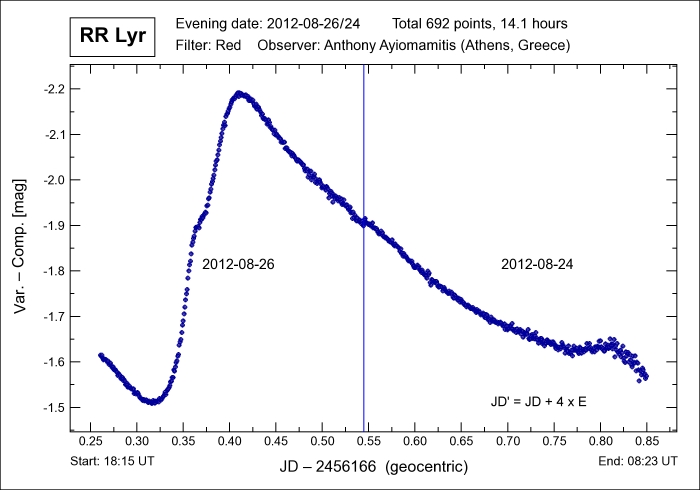 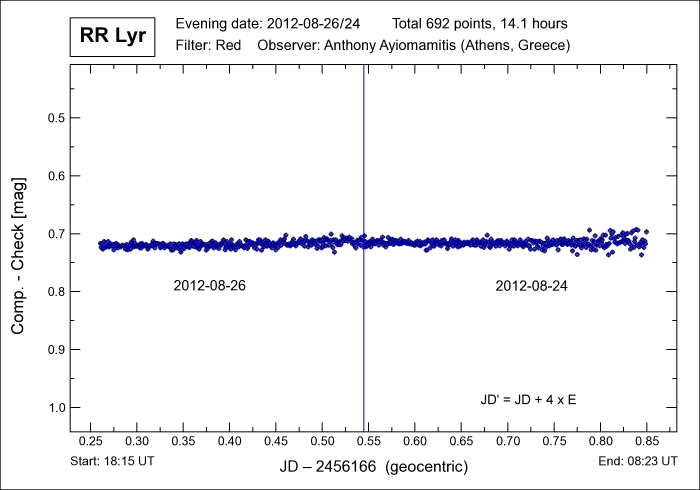 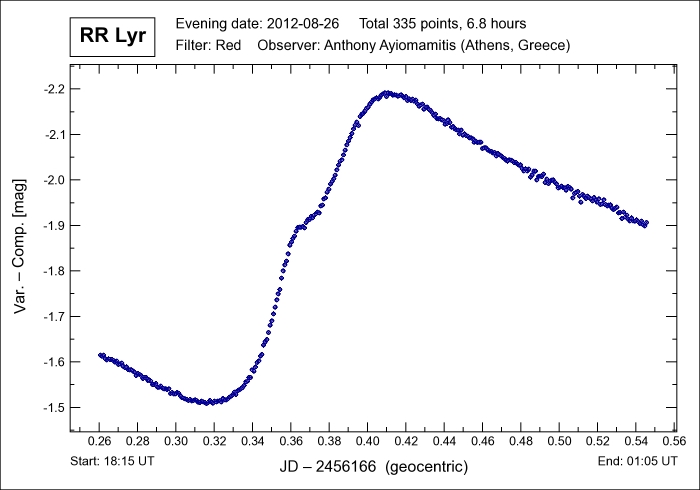 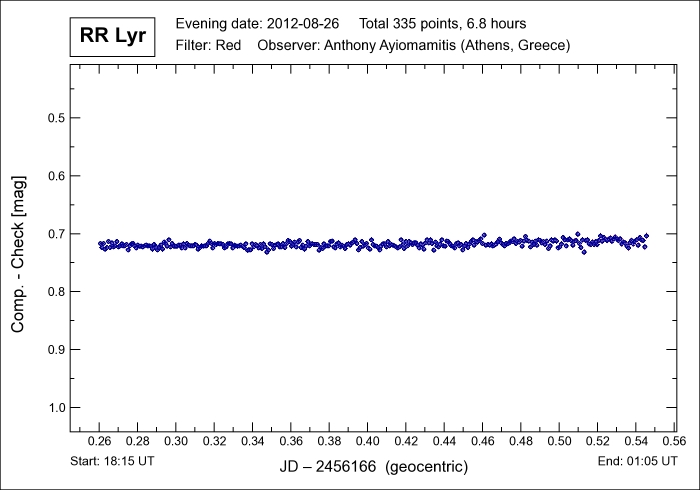 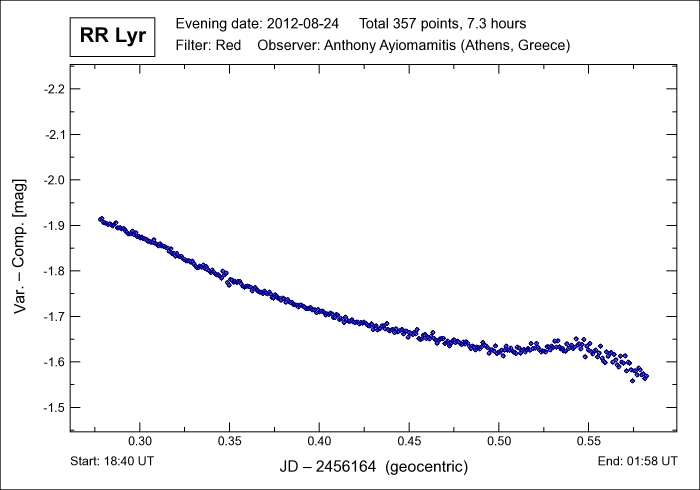 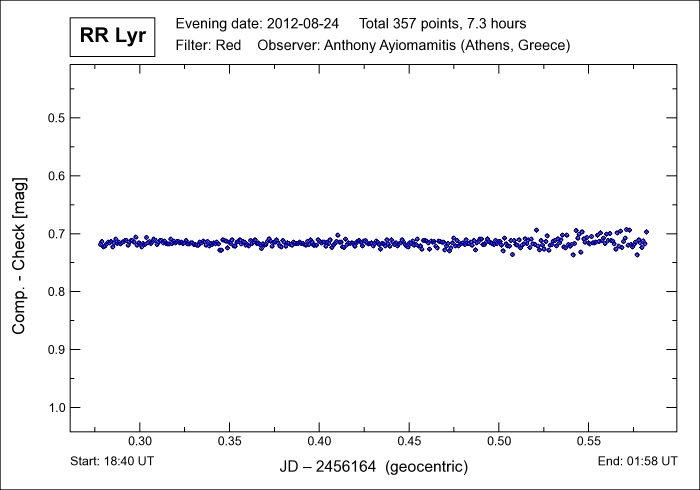
|
Date: Aug 24-25, 2012 21:40 - 04:58 UT+3 Aug 26-27, 2012 21:15 - 04:05 UT+3 Location: Athens, Greece Equipment: AP 305/f3.8 Riccardi-Honders AP 1200GTO GEM SBIG ST-10XME SBIG CFW10 SBIG LRGB filters Integrations:
Temperatures:
Software: CCDSoft V5.00.201 AIP4Win V2.4.0 Processing: Reduction Differential Photometry |